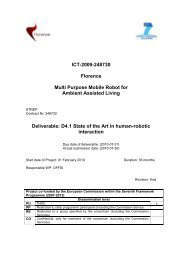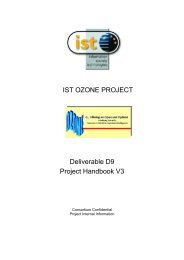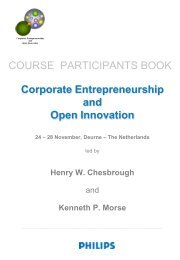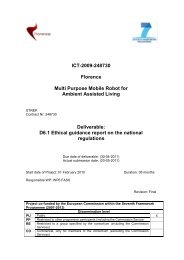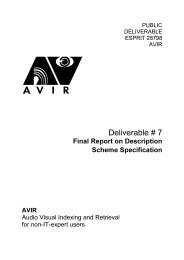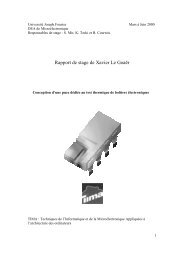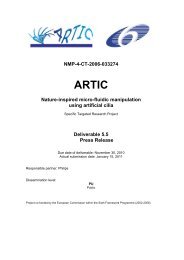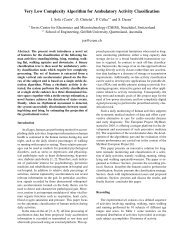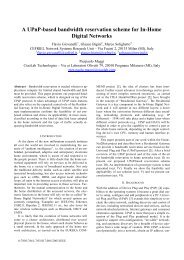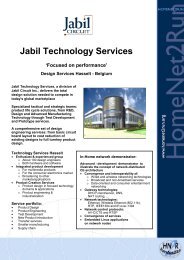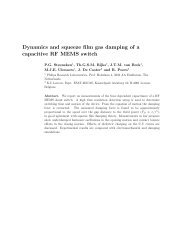User Interface Service Software Developerís Guide - Hitech Projects
User Interface Service Software Developerís Guide - Hitech Projects
User Interface Service Software Developerís Guide - Hitech Projects
You also want an ePaper? Increase the reach of your titles
YUMPU automatically turns print PDFs into web optimized ePapers that Google loves.
January 2008<br />
Public<br />
Bugs<br />
None<br />
Patches<br />
None<br />
3.1.4 Multimodal Fusion<br />
Provider<br />
INRIA<br />
Introduction<br />
The Multimodal Fusion Module (MFM) deals with related information from the user, occurring<br />
in short periods of time and that can be mutually completed. The role of the MFM is to merge<br />
and cross-complete information from several input modules. The MFM then outputs the<br />
merged information with as primary target the Multimodal Dialog Manager.<br />
• Inputs: several MMIL-encoded message. MMIL format is used for each of the input<br />
modalities, a conversion module may be required for each modality that is not handled<br />
by a MMIL-compliant module.<br />
• Output: a unique MMIL message containing all the merged messages, completed with<br />
complementary information when possible.<br />
• Parameters:<br />
An ontology,<br />
Descriptions of the currently accessible task entities and events/commands<br />
A modality-dependant tuning about time windows is possible, which can be turned, if<br />
necessary, into a context-dependant tuning, while it is not the case currently.<br />
Currently handled modalities: Natural Language, 2D Gestures (object selections), 3D Gestures<br />
(commands)<br />
• Semantic chunks (from natural language analysis) with a primary type (e.g. from the<br />
noun for participants or verbs for events: the TV, stop) and/or a set of atomic<br />
characteristics (e.g. from adjectives or verbs). Complex characteristics related to<br />
events or related to states with one relations such as “the pen I left on the chair<br />
yesterday” or “the pen near the box” are not handled in the current state of<br />
development.<br />
• Weighted sets of conceptually-marked objects (from 2D gesture modules)<br />
• Commands related to the task (from 3D gesture modules, menu-oriented UI)<br />
• Following examples are all eventually merged into a simple command Pause(HiFi):<br />
• <strong>User</strong> gesture describing a pause THEN user gesture pointing toward the HiFi.<br />
• <strong>User</strong> utterance “The first-floor stereo” WHILE user gesture describing a pause.<br />
• <strong>User</strong> utterance “Stop the music”.<br />
Amigo IST-2004-004182 73/114



